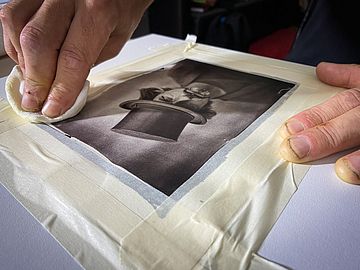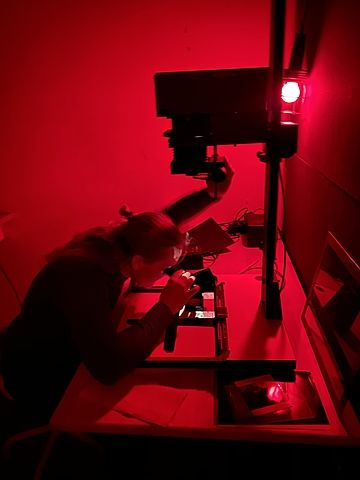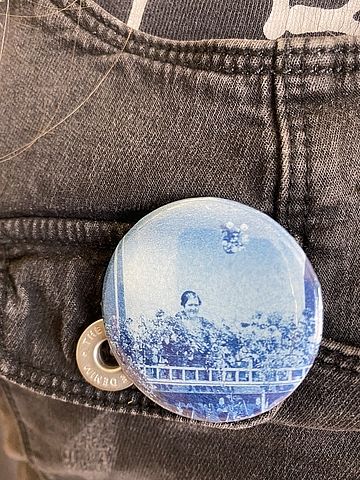Like "slow food", this so-called "slow photography" has become part of a reflected, more mindful lifestyle - a current manifestation of that "less is more" idea that puts thinking before doing and enjoying before getting things done.
Analogue photography rewards its image makers with unique magical moments on film. It combines traditional craftsmanship and new creative skills with a kind of alchemical knowledge. This recipe for success has developed into an entertaining alternative to the often automated, algorithm-driven digital workflows.
Colour cast and other small errors
Analogue photography offers us manageable insights into the process of creating an image, it makes a technically highly equipped medium "comprehensible" again. And it graciously forgives our mistakes. More than that: it even celebrates them at times. The creative preoccupation with the "art of error" allows creative image makers to work with the colour cast of old film material or light leaks of a cheap plastic camera. Photography here activates an artistic playfulness and the desire to experiment.
When the clock suddenly ticks slower
Analogue technology forces photographers to see things differently. Large-format plate cameras, for example, which are difficult to transport, are not suitable for quick pictures - and certainly not for sessions with many shots in one day. Working with equipment mounted on massive tripods remains static and meditative. This pushes the photographers to visualise their images clearly in advance.
The analogue working process basically urges us to be patient anyway and always rewards it. It can take days or weeks until an exposed film is developed and returned from the lab and prints are available. Analogue photos leave room for anticipation and surprises. In the traditional photo lab, we can watch with childlike pleasure as a picture motif peels out of the white of the photo paper.
The charm of the fast developer: the instant photo
The revival of Polaroid photography and the global triumph of the Fujifilm Instax are proof of the power of the analogue instant picture. Polaroid pictures are unique specimens with individual character and small flaws. A Polaroid camera and the Fujifilm Instax - which can be experienced live for the first time at the PHOTOPIA Summit in Hamburg from 13 to 16 October - provide us with prints that we can immediately hold in our hands, view and share with others. Image development is like a ritual, which for some even includes the pointless drying of the pictures.
"Have fun taking pictures and stay relaxed about it".
So-called toy cameras like the Russian Lomo or a plastic camera called Holga, together with the Polaroid, have saved analogue photography as a youth experiment into the digital age. This was partly thanks to the anarchic philosophy of the Lomographic Society in Vienna, which turned a student pastime into a global marketing method. The core of their philosophy: "Have fun taking pictures and stay relaxed. You don't have to know what's in the picture beforehand. Afterwards, neither."
Steps in development: a new infrastructure
With the analogue revival, some small entrepreneurs have started making their own photo chemicals and coated photo plates again. One-man manufactories are reviving the photo scene in places where former global corporations like Kodak or Agfa had to give up.
In big cities, specialist shops specialising in analogue photography can now be found again. The value of traditional photography is gaining social recognition. In Switzerland, analogue photography has been placed on the national UNESCO list of crafts worthy of protection. Historical photographic techniques are once again being taught in seminars and workshops around the world. And at the insistence of many students, analogue photography has returned to the curricula of German photography education.
In photographic art in particular, analogue work helps to create unmistakable one-of-a-kind works. Old photographic processes such as the daguerreotype, the collodion wet plate or the forgotten photographic papers such as "salt or albumen paper" are currently back in vogue.
Picture credit: Peter Michels www.fotokultur.ch
When the world is upside down: With historical plate cameras, the photographer sees the subject mirrored.



